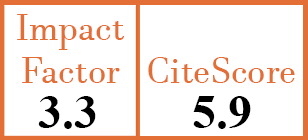Full Papers
Exploring the comorbidity mechanism of rheumatoid arthritis and systemic lupus erythematosus through transcriptomics and conducting experimental validation
M. Shen1, C. You2
- Laboratory Medical Center, Lanzhou University Second Hospital, Lanzhou, China.
- Laboratory Medical Center, Lanzhou University Second Hospital, Lanzhou, China. youchg@lzu.edu.cn
CER18994
Full Papers
Received: 10/06/2025
Accepted : 09/10/2025
In Press: 29/10/2025
Abstract
OBJECTIVES:
Rheumatoid arthritis (RA) and systemic lupus erythematosus (SLE) are two systemic autoimmune diseases with significant comorbidity, and the shared molecular mechanisms remain unclear.
METHODS:
This study integrates four transcriptomic datasets (GSE17755, GSE110169, GSE93272, GSE110174), combining differential expression gene (DEG) screening, protein-protein interaction (PPI) network analysis, machine learning (LASSO and random forest), and single-sample gene set enrichment analysis (ssGSEA) to systematically analyse the comorbidity mechanisms of RA and SLE.
RESULTS:
It was found that RA and SLE share immune regulatory genes such as IFIT3, TNFSF13B, and ZCCHC2, which are significantly upregulated in both diseases and have high diagnostic efficacy. Functional analysis shows that IFIT3 is associated with type I interferon and cGAS-STING pathways, TNFSF13B (BAFF) is associated with B cell activation and TLR signalling pathways, and ZCCHC2 is associated with cell cycle regulation and neurodegenerative diseases. Immune cell analysis indicates that in RA, macrophages are positively correlated with TNFSF13B, while in SLE, plasmacytoid dendritic cells (pDCs) are negatively correlated with IFIT3, suggesting disease-specific differences in the immune microenvironment.
CONCLUSIONS:
This study elucidates the molecular mechanisms of RA and SLE comorbidity, identifies cross-disease biomarkers and their interactions with immune cells and drugs, providing theoretical basis for precision diagnosis and treatment. The study limitations include data heterogeneity and the lack of Rhupus patient samples, which need to be validated through functional experiments and multicentre cohorts in the future.


